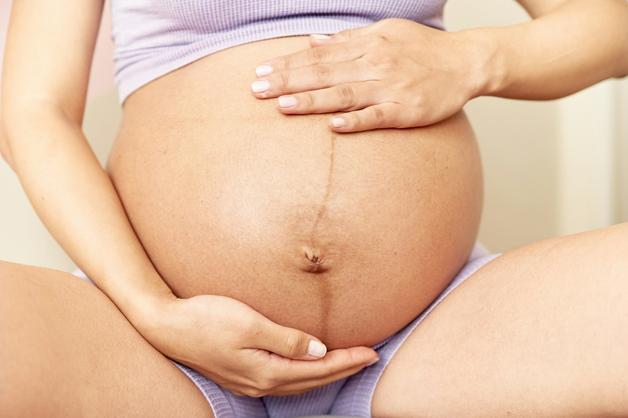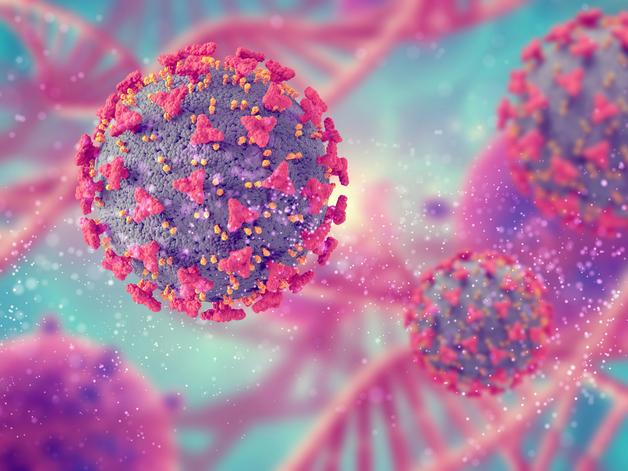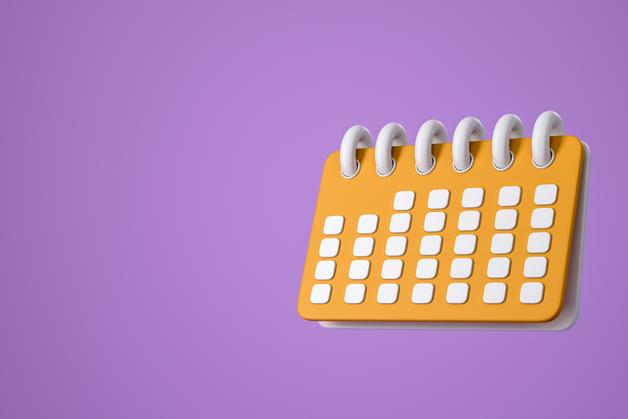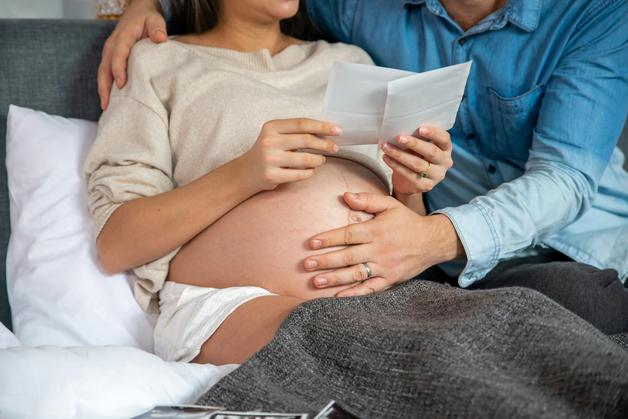What is that unusual tightening in your belly, a sensation both puzzling and sometimes oddly reassuring—an odd rehearsal, perhaps, for the momentous day ahead? For many parents, “Braxton Hicks contractions” slip unexpectedly into daily life, sparking questions, sometimes a touch of worry, always a desire for simple answers. Maybe you sensed it: a sudden firmness like your uterus was giving a discreet demonstration of its strength, only to soften soon after. Is this normal? Should you pause, call your midwife, lie down, or keep on with your routine? Amidst the anticipation of meeting your baby, every flutter, twitch or cramp takes on new significance. Here, you’ll discover how and why these contractions appear, how to tell them apart from labor, and what science tells us about their role—a blend of reassurance and practical wisdom for this remarkable chapter.
Understanding Braxton Hicks contractions
Braxton Hicks contractions. The name alone feels almost whimsical, but the sensation itself can be startling. What exactly are they? These are the
uterine contractions described as “practice” or “false labor”—episodes that prepare the uterus, without triggering childbirth. Imagine your womb, a powerful muscular organ, gently rehearsing for its starring role. Instead of labor’s intense regularity, these tightenings pop up in irregular, often unpredictable spurts. John Braxton Hicks, the physician who first detailed these in 1872, gave his name to a phenomenon both universal and bewildering: uterine contractions with no message of urgency, simply the uterus flexing its “muscle memory.”
Parents may spot their first Braxton Hicks contractions as early as the
second trimester—or perhaps not at all, and that’s normal. For some they’re merely a vague abdominal tightening; for others, an obvious, temporary “hardness” that lifts questions about labor’s onset. The experience, as medical literature highlights, is rarely painful, more a sensation of
abdominal cramping or gentle pressure. Science stresses the importance of distinguishing this “practice run” from true labor: getting it right eases anxiety, reduces unnecessary hospital visits, and nurtures calm as your
pregnancy unfolds.
When Braxton Hicks contractions start in pregnancy
Questions bubble up as soon as these sensations arise: Why now? Am I too early? Most often, parents notice Braxton Hicks contractions in the
second or
third trimester. Yet, did you know that your uterus might begin these muscle rehearsals as early as six weeks? Of course, the body keeps these initial movements nearly invisible—a silent preparation until the later months. Typically, the contractions start as soft, sporadic bits of
uterine tightening: not rhythmic, not increasingly intense, and not following any clock. In some cases, you may feel up to 10, even 15, episodes a day as the weeks roll on, especially once the third trimester sets in.
These contractions rarely last long. Maybe just 30 seconds, occasionally creeping up to two minutes, but rarely stealing the show. The key is their
irregular pattern—sometimes clustered, sometimes hardly noticeable over hours. Yet, if the rhythm quickens, pain grows, or you notice a set pattern, medical advice is warranted, as these changes could signal your body gearing up for real labor, not just practice.
Causes and triggers of Braxton Hicks contractions
So, why does the uterus “wake up” like this—randomly and without instruction? Medically, Braxton Hicks contractions are a sort of prenatal training regimen. The
uterine muscle must “tone up,” becoming more responsive and flexible as birth approaches. Each contraction supports greater
cervical elasticity and improves
blood flow to the placenta—fine-tuning oxygen delivery and helping your baby thrive.
What calls these contractions into action? Frequently, physical prompts like
dehydration, a
full bladder, or even a little more
activity than usual. It might be gentle touching of your abdomen, a moment of emotional stress, or increased fetal movement. Even
sexual intercourse can trigger your uterus, though, again, without setting off actual labor.
Parents often wonder: is there something I’m doing wrong? Not at all. These triggers belong to the day-to-day choreography of pregnancy. If anything, they’re reminders that your uterus is responsive and healthy, marking progress as the big day inches closer.
Symptoms: what Braxton Hicks contractions feel like
Describing Braxton Hicks contractions sometimes feels like chasing clouds—they’re elusive, highly personal, and always short-lived. Most report a
tightening or mild
hardening low in the abdomen, a feeling akin to the uterus suddenly becoming firm, then quickly relaxing. At times, your belly’s shape changes, almost as if your baby is gathering into a lump, only to melt away moments later. Discomfort? Yes. Pain? Rarely. It’s often more of a “pressure event” than a true pain episode, and the feeling typically remains at the front of your abdomen or pelvis.
What sets them apart? The contraction does not last long; it doesn’t get stronger; rest or changing positions offers relief. Still unsure? Noting when, how, and for how long they strike may help clarify—a brief log can turn fuzzy sensations into clear patterns.
Telling the difference: Braxton Hicks vs. true labor contractions
How to distinguish between a warm-up and the real event? Here lie the essential clues:
- Braxton Hicks contractions display irregularity: their duration, frequency, and strength vary. Typically around 30 seconds, they fade with a sip of water or a change in activity. They don’t “build momentum.”
- True labor contractions? These command attention: steady, growing, and relentless. They sweep from the back toward the front, and don’t ease if you rest or change position. Most importantly, they start to cause changes in the cervix—dilatation and effacement—which Braxton Hicks cannot achieve.
- Medical science points to specific warning signs: persistent vaginal bleeding, leaking fluid, or intense, unremitting pain. Any appearance of these signals a need for prompt assessment.
Still in doubt? Practicing
deep slow breathing or simply adjusting your position can often reveal the answer. Braxton Hicks contractions typically melt away with comfort measures; true labor simply insists.
Managing and easing Braxton Hicks contractions
Feeling those
practice contractions can be unsettling, especially as they pop up in the middle of a meeting or when relaxing at home. Thankfully, the remedies are both simple and backed by widespread clinical advice:
- Focus on hydration. A glass of water can sometimes soothe contractions brought on by dehydration.
- Change position. If you’ve been bustling about, take a break. If you’re resting, a gentle walk—even a stroll around the living room—can make a difference.
- Soothe your body with relaxation techniques: deep, measured breaths or a few minutes of quiet can recalibrate your system.
- Warmth helps. A warm bath or a heat pack placed (briefly) on your abdomen encourages muscles to relax.
- Empty your bladder. This can reduce irritation and contraction frequency, especially if you’ve delayed urination.
Adding regular gentle movement to your day—prenatal yoga, slow walking, or even just stretching—can also alleviate tension and make these contractions less bothersome. Techniques like
sophrology or
prenatal massage (always with a specialist!) may further support comfort throughout the unpredictable rhythms of pregnancy.
Braxton Hicks contractions overwhelmingly represent a normal, reassuring part of pregnancy’s progression. Yet, medical guidelines are clear: some symptoms require swift response.
Seek medical advice if you notice:
- Regular, painful uterine contractions, especially if they occur before 37 weeks
- Vaginal bleeding or a substantial increase in vaginal discharge
- Fluid leakage (which could signify rupture of membranes)
- Persistent pelvic or abdominal pain unrelieved by position changes or rest
- Signs resembling preterm labor: strong, regular tightening, low back pain
- Marked reduction in fetal movements—fewer than 10 movements in 2 hours in the late second or third trimester
These signs move beyond the scope of “normal practice.” Trust your observations and instincts, and never feel hesitant to check in with your care team; safety, for both you and your baby, always comes first.
Other causes of abdominal pain during pregnancy
Not all road bumps in pregnancy stem from Braxton Hicks contractions. Science highlights several common culprits:
- Round ligament pain: A quick, sometimes sharp, one-sided discomfort as ligaments stretch to support your growing uterus. Most noticeable on sudden movement or when changing positions.
- Urinary tract infections (UTIs): Persistent low abdominal pain, often paired with a burning feeling when urinating.
- Digestive woes: Constipation and intestinal gas—far from glamorous, entirely common.
Ongoing pain, escalating in intensity, or pain combined with
fever, bleeding, or fluid loss, calls for timely medical evaluation.
The physiological role of Braxton Hicks contractions in pregnancy
Braxton Hicks contractions hold more than a passive role; they are the womb’s rehearsal, strengthening the
uterine muscle and gradually softening the
cervix while ensuring
optimal blood flow to the placenta. This repeated, low-intensity effort isn’t just training for labor: it also optimizes oxygen and nutrients for your growing baby. On the emotional plane, whose value is often understated, learning to “read” these contractions builds confidence—turning anticipation (and maybe a hint of trepidation) into readiness and resilience.
Communicating with your care provider
Tracking each contraction—timing, frequency, associated symptoms—unlocks practical knowledge for both you and your healthcare team. Share specifics: “When does it happen? How intense? How long?” These details transform uncertainty into shared decision-making and empower you to take the reins of your own pregnancy journey. Open communication isn’t just recommended—it’s the backbone of collaborative, respectful care.
Key takeaways
- Braxton Hicks contractions embody pregnancy’s gradual progression; they’re natural and serve an adaptive function in preparing for labor.
- Their irregular character and mild intensity—plus the absence of cervical changes—distinguish them sharply from true labor.
- Prevent discomfort by maintaining hydration, changing positions, and trying relaxation or gentle movement.
- Monitor for alarming signs: persistent pain, abnormal fluids or bleeding, changing baby movement. Prompt partnership with your care provider is always the wisest course.
- High-quality, evidence-based resources—alongside simple self-care—empower greater peace of mind.
- Download the Heloa app for targeted advice and free health questionnaires designed for children and families.
Braxton Hicks contractions: not a warning sign, but your body’s quiet rehearsal—guiding you, step by step, toward one of life’s greatest transformations.
Questions Parents Ask
Can Braxton Hicks contractions cause back pain?
Braxton Hicks contractions are most commonly felt as a tightening or firming in the front of the abdomen. However, some parents do notice mild discomfort or aching in their lower back or pelvis during these episodes. This can happen because
pregnancy changes posture and muscle positioning. Generally, if the discomfort remains mild and goes away with rest or changes in activity, il n’y a pas lieu de s’inquiéter. Should the pain become stronger or persistent, or if it is combined with other symptoms, it’s recommended to reach out to your healthcare provider for reassurance.
Is it normal to have frequent Braxton Hicks contractions at 35 weeks?
As the pregnancy advances, especially around 35 weeks, many parents find that Braxton Hicks contractions become more noticeable and may occur more often. This increase is part of your body’s natural preparation for labor. If these tightenings remain irregular, mild, and do not become more intense or rhythmic, c’est tout à fait normal. If you notice a steady pattern, increasing pain, or any other unusual symptoms, n’hésitez pas à consulter votre professionnel de santé. Your well-being and peace of mind are important.
Where do you usually feel Braxton Hicks contractions?
Most parents describe Braxton Hicks contractions as a gentle tightening or hardening in the front of the abdomen, just below the belly button or around the pelvic area. Sometimes, the sensation may extend to the lower pelvis or even the back, especially as the pregnancy progresses. If you’re ever unsure of what you’re feeling, taking note of when and where the sensation occurs can help bring clarity and can be valuable information to discuss with your care provider. Each pregnancy is unique, and your experience is valid.
How long does a Braxton Hicks contraction last?
Anywhere from 30 seconds to two minutes, but without ever locking into a true, regular rhythm. Such variation is expected and physiologically normal.
How many per day count as “usual”?
Up to 10 to 15 throughout the day wouldn’t surprise your midwife. However, there’s no universal standard; some feel barely any, others far more. Regularity or increasing pain—those are the real red flags.
Should I worry at all?
Normally, these contractions shouldn’t be painful or disruptive. If pain escalates or contractions become frequent and rhythmic before 37 weeks, call your care team.
Do Braxton Hicks contractions endanger my baby or pregnancy?
Medical consensus says no. They are
harmless and essential for preparing your uterus and cervix for birth.
Never felt one?
Perfectly normal. Some never notice any until labor begins.
What if your baby moves during a contraction?
Fetal activity during these episodes causes no concern, unless you perceive a marked decrease overall.
 Further reading:
Further reading:
 Further reading:
Further reading:








